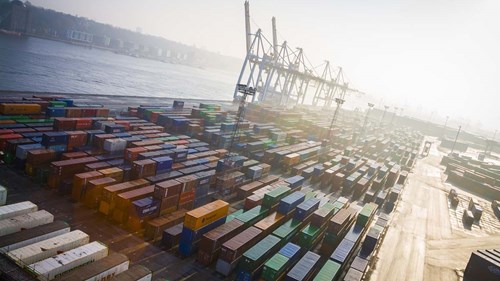New draft EU Machinery Regulation published
On 12 July 2022, a new draft EU Machinery Regulation was published. This European regulation is to replace Machinery Directive 2006/42/EC after more than 15 years and become the new core policy on machine and plant safety in the European Economic Area. The current draft was prepared by the representatives of the Member States in the working group of the European Council under French leadership. It is to be understood as a suggestion for a compromise that takes into account the various viewpoints of the Member States.
Timeline until the new EU Machinery Regulation enters into force
From the current status, it seems conceivable that the new EU Machinery Regulation will be published in the EU Official Journal by the end of 2022, enter into force shortly thereafter and be largely subject to mandatory implementation after a 36-month transitional phase.
Important changes and consequences for mechanical and plant engineering
The new draft is the result of discussions among the representatives of the Member States in the Council Working Group. Thus, it can be assumed that the current draft is already close to the final wording of the Regulation. With this in mind, it can be said that the new EU Machinery Regulation cannot be expected to constitute a paradigm shift, but rather to consist of many changes in details. Nevertheless, the following important changes will probably be significant for many in the mechanical and plant engineering sectors:
- The list of machines with strong risk potential currently found in Annex IV of the Machinery Directive will be expanded and located in Annex I of the new EU Machinery Regulation. The EU Commission will be able to make changes to this list in the future via delegated acts.
Consequence: Manufacturers must expect the list of machines with strong risk potential to be dynamically adjusted in the future and certain machines to be added to the list of machinery in Annex I at short notice.
- A notified body will have to be involved in conformity evaluations for machines with strong risk potential (currently regulated in Annex IV of Directive 2006/42/EC on Machinery).
Consequence: The requirement to call in notified bodies will result in higher conformity evaluation costs for companies.
- New requirements for secure technology in relation to cyber security and artificial intelligence (AI) will apply.
Consequence: Increased costs for assessments of conformity for machines.
- Definitions of terms and catalogues of duties for economic operators (manufacturers, importers, distributors and authorised representatives) will be reworded and adjusted to reflect the current European legal status (“new legislative framework”).
Consequence: Introduction of official reporting obligations if machines in the field constitute risks, new obligations for distributors, but also more legal certainty on the whole for the industry due to adjustments that reflect the current legal situation.
- Digital instructions will generally be permitted for B2B machines. Upon request, paper versions must be subsequently delivered to end customers by six months after purchase.
Consequence: The long-awaited permission to issue digital instructions is now in sight, but with significant restrictions.
No clear affirmation of digitalising instructions for use
The new provisions regarding digital instructions will probably be of great interest to the mechanical and plant engineering sector. Manufacturers are still required to deliver detailed manuals in paper form along with their products – in all of the official languages of the EU countries in which a product is sold. The expenditure of resources involved here has understandably been a source of exasperation for the industry for years.
The new EU Machinery Regulation has taken a long running start for its jump into the digitalisation age, yet ultimately not jumped far enough. Admittedly, digital instructions will be permissible in the future. However, manufacturers will be required, at purchasers’ request, to provide them with a complete paper version of the instructions by six months after purchase of the machine. The current wording of the draft indicates that this time period will begin to run when the end customer purchases the machine. Instructions in paper form in which the safety instructions are summarised will also continue to be required for machines that are to be classified as consumer products (B2C products).
These restrictions stem from the concerns of several Member States that not every user in every situation would be able to access purely digital instructions. For manufacturers that do not deliver directly to end consumers but rather to distributors, an indefinite time period remains in which they may have to deliver voluminous instruction tomes in paper form at short notice.
No coordination of timing with the new European AI Regulation
The extremely expedient idea of coordinating the timing of publication of the new EU Machinery Regulation with that of the new European AI Regulation as originally considered now seems to be off the table. This is also unfortunate because it practically ensures that inconsistencies in requirements placed on machines with AI will occur.









